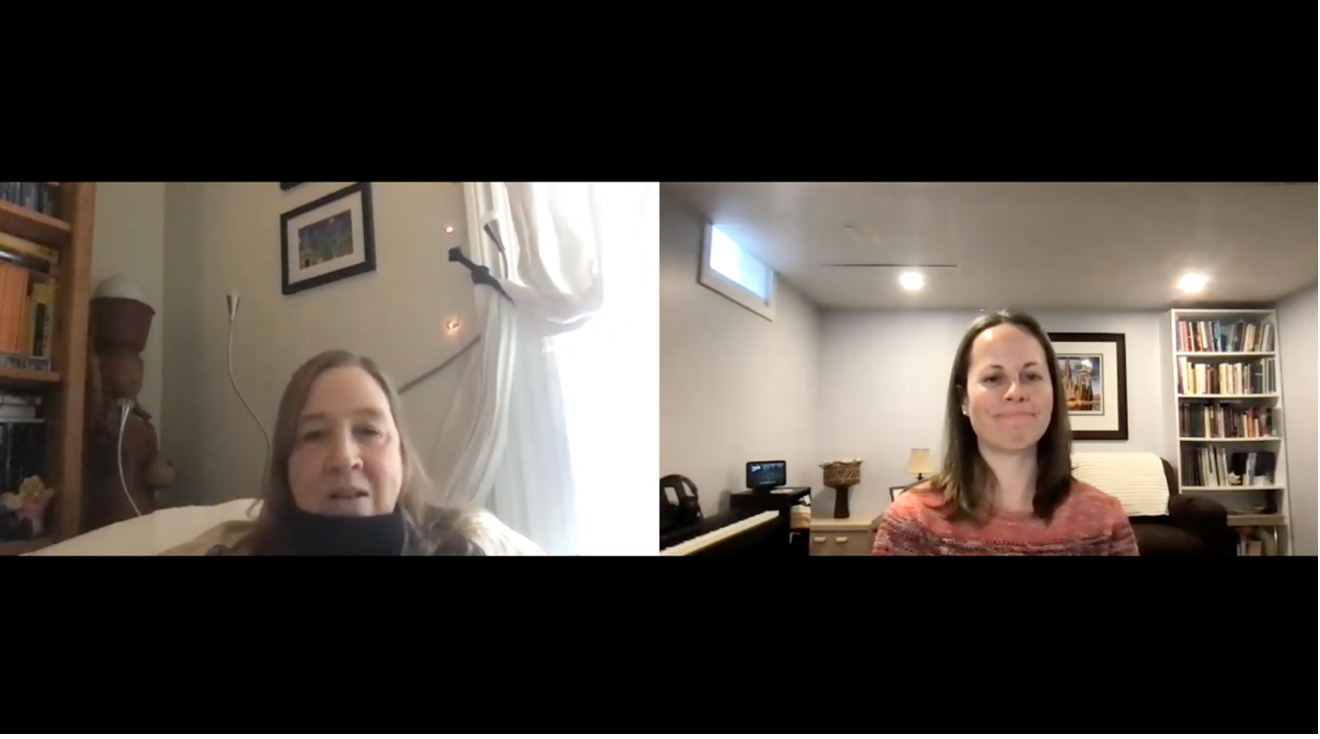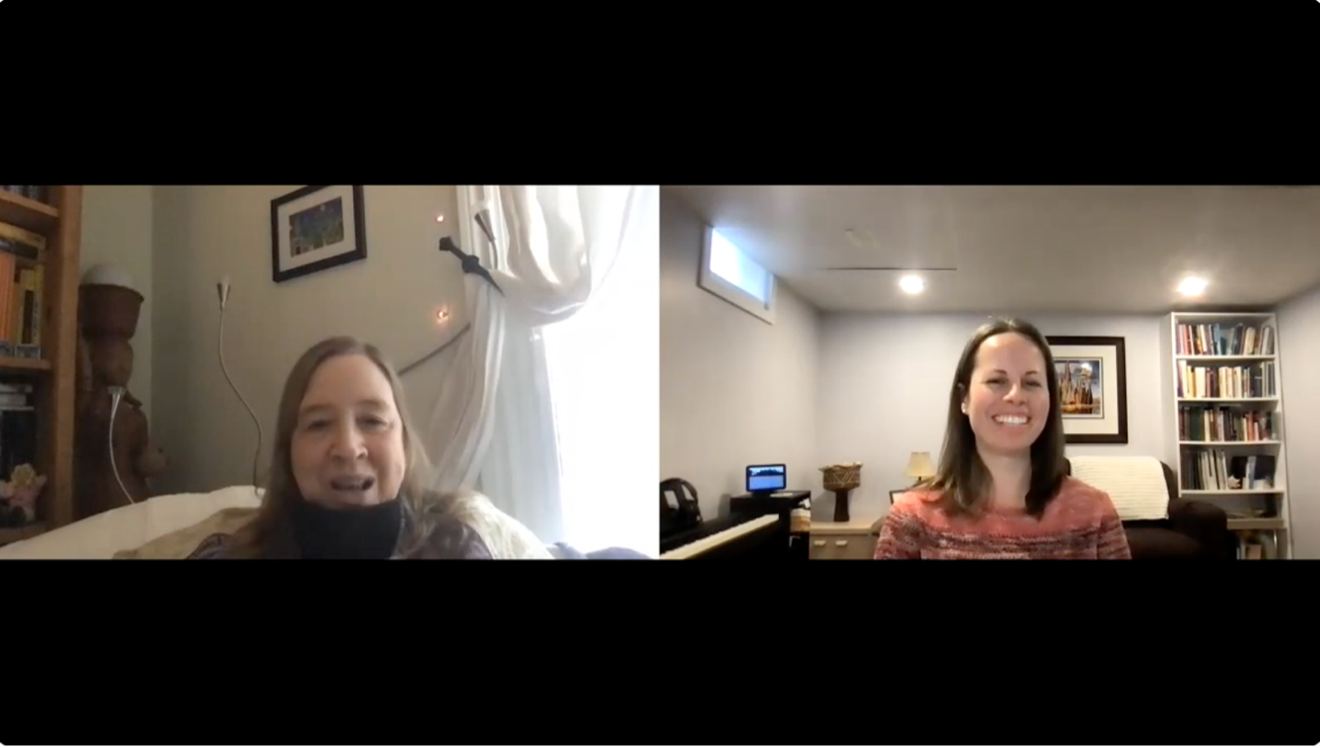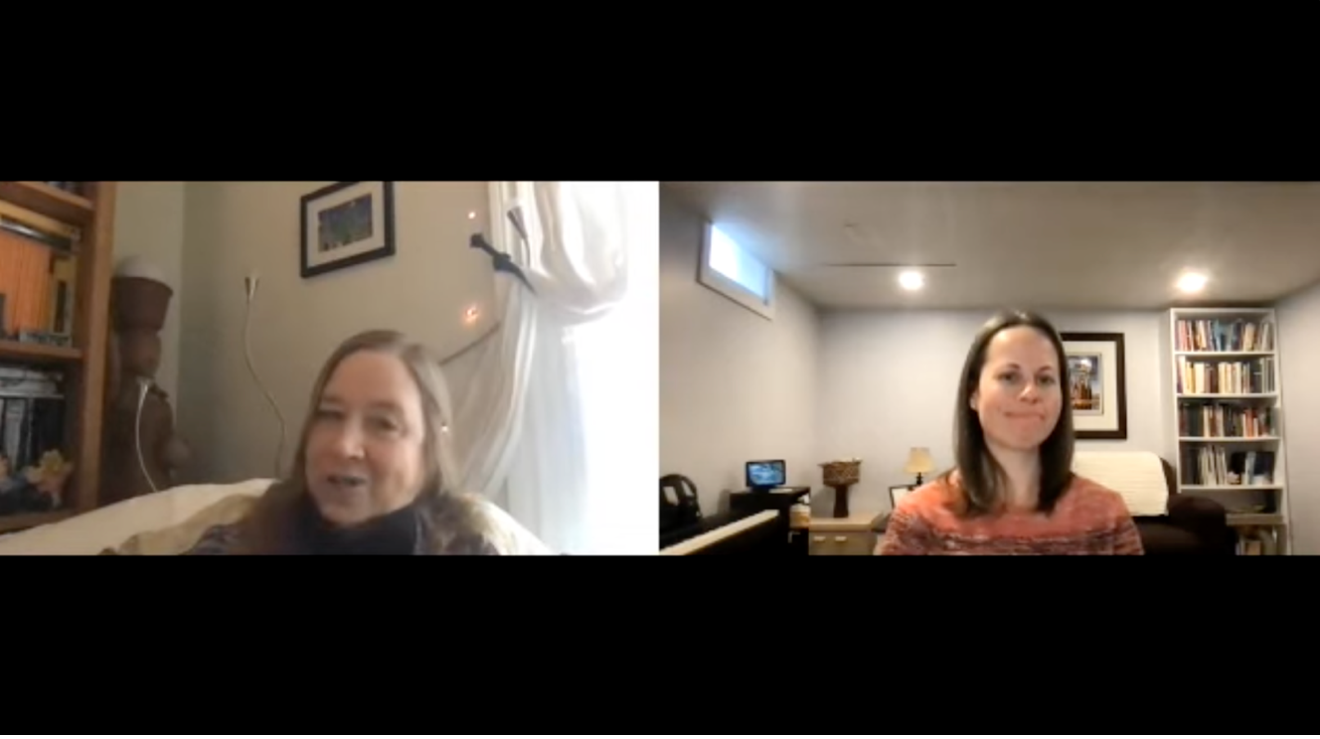DANIELLE SIREK
Western University (Canada)
November 2023
Published in Action, Criticism, and Theory for Music Education 22 (4): 1–11. [pdf] https://doi.org/10.22176/act22.4.1
 Figure 1: Album artwork for the musical dedication to this issue in memory of Dr. Janice Waldron, Willow by University of Windsor student Madelyn Stein. Artwork by University of Windsor student Bianca Daher.
Figure 1: Album artwork for the musical dedication to this issue in memory of Dr. Janice Waldron, Willow by University of Windsor student Madelyn Stein. Artwork by University of Windsor student Bianca Daher.
This issue of Action, Criticism, and Theory for Music Education engages with themes from the MayDay Group Colloquium 33, Social Media for Good or Evil in Music Learning and Teaching?, which took place in Windsor, Ontario in 2022. The Colloquium explored the MayDay Group Action Ideal related to technology and digital media:
We critically examine ways in which humans and technologies interact, and how these interactions contribute to the development and/or destruction of forms of musical knowledge and practice.
Technologies evolve within socio-cultural contexts as responses to shifting needs and modes of encounters among humans and their surrounding environments. The use of technologies alters the very ways in which we interact, communicate, and make meaning of our world—transforming individual and collective perceptions of knowledge, truth, and justice. Yet, surrounding the creation, introduction, manipulation, and use of each technological tool is an ideological bias with the potential to induce benefits and harms. Implementation of existing and emergent technologies must be balanced with ongoing critique of the commodification of musics, teaching, and learning; inequitable distribution of and access to technological resources; and concerns about corporate power and overreach. (MayDay Group 2021, para. 11)
Inspired by the recent publication of The Oxford Handbook on Social Media and Music Learning edited by Janice Waldron, Stephanie Horsley, and Kari Veblen (2022), presenters were invited to address and/or problematize the relationship of technologies and social media to/with music learning, teaching, making, production, and consumption:
- How have technologies and social media evolved within music learning and teaching contexts; how do they support or exploit the ways in which musicians learn and interact; how do they support (or not support) musical agency?
- How has the use of technologies and social media altered ways in which people musically interact, communicate, and make meaning of our world? How has it transformed perceptions of knowledge, truth, and justice?
- How do social media, social networking, and social network sites (SNSs) enable and support music learning in diverse contexts and what are the implications of their use for future music learning?
- How are issues surrounding mass self-communication, power, democracy, and identity negotiated in a networked society and what are the implications for music learning and making?
- How might existing and emergent technologies be implemented and balanced with ongoing critique of the commodification of musics, teaching, and learning; how might music educators address inequitable distribution of and access to such technological resources; and how might concerns about digital labour, corporate power, and overreach be addressed?
- How do technologies and network interconnectivity inform music learning and teaching? How can social media theories (for example, “cultures of connectivity,” connectivism, actor-network theory, interactive participation, “spreadability,” participatory culture, media ecology theory, networked individualism, networked publics) inform and frame music learning and teaching? (MayDay Group 2022)
I co-hosted the Colloquium with Janice Waldron, whose contributions to MayDay Group were many: she served as Editor of the MayDay Group journal TOPICS for Music Education Praxis; was a member of the Editorial Board for the MayDay Group journal Action, Criticism, and Theory for Music Education, and was a member of the MayDay Group Steering Committee. Janice had long dreamed of hosting a conference in the School of Creative Arts at the University of Windsor, where she was Professor of Music Education. The MDG Colloquium was everything she’d hoped it would be: excellent presentations, great food, lots of students, and lots of music (Sirek et al. 2023). We tragically lost Janice just a few months later after a short battle with cancer.
Remembering Janice Waldron, One Year Later
As I have written elsewhere, Janice Waldron was a colleague, mentor, and friend (Mantie et al. 2023; Sirek 2022). In this opening editorial, I honour her memory and her mentorship by drawing from a video-recorded interview I conducted with her in January 2021 for an undergraduate class in ethnomusicology, as well as by reflecting on her teaching.
Janice’s research was directly influenced by her passion for Irish traditional music and her “bi-musical” lived experience (Waldron 2007). Although she had trained as a saxophone player, her mother’s gift of a tin whistle in 1983 after a trip to Ireland led to nearly 40 years of learning, loving, and researching Irish traditional music—or, as she often called it, IrTrad (Waldron 2016)—and the particular modes of learning and musicking it afforded her and others. In the interview, she reflected that her realization of the impact of playing IrTrad was gradual, but profound.
 Interview with Janice Waldron, This thing I do on the weekends
Interview with Janice Waldron, This thing I do on the weekends
https://www.youtube.com/watch?v=4-7MXA1P2DM
Drawing from her research, she was adamant that regardless of her students’ training, they needed to engage in music learning traditions different from their background. She believed that musicians should be taught to play with attention to the cultural context of whatever the performance idiom is (Waldron 2007), and she advocated that students have the opportunity to play music in “authentic” contextual situations: adopting learning styles appropriate to the musical genre; exploring the underlying meanings of musical pieces; and analyzing social, political, and historical settings in which music is created and performed.
The importance of context and the relationship between performance practice and pedagogy were evident in the music education and ethnomusicology courses Janice taught. In addition to learning theoretically about IrTrad, students in her ethnomusicology class performed and transcribed tin whistle tunes by ear. Importantly, they also discussed how they were learning—whether or not they were music education majors—and how this learning might differ from “traditional” learning in the music classroom or studio (Waldron 2018). Janice facilitated such pedagogical discussions by creating partnerships for informal music learning in class, by encouraging students to connect through social media by joining a class Facebook page, through in-class discussion and conferencing, and by uploading recordings of herself playing and discussing how she learned—and how this lifelong learning fit into the spectrum of her personal creative practice and her teaching in the classroom (Waldron 2015, 2018).
 Interview with Janice Waldron, Performance practice and pedagogy
Interview with Janice Waldron, Performance practice and pedagogy
https://www.youtube.com/watch?v=DSO-MLndNX4
Early on in her teaching career, Janice saw the many possibilities that “participatory culture” (Jenkins 2006) could hold for music education in diverse settings (Waldron 2016). Drawing from the theories of Henry Jenkins, she became interested in the ways that participatory music cultures emerge and their implications for music education. Janice wrote extensively about informal online and convergent online and offline music participatory culture as well as the ways in which social media—and YouTube in particular—is used in these music education contexts. For example, YouTube’s role in online community formation, YouTube as a platform for observational and aural/oral learning, and the ways in which YouTube videos “act as vehicles of agency to promote and engage participatory culture through discourse in online community” (Waldron 2012, 94; see also Waldron 2011, 2013).
In the interview, Janice reflected on what she learned playing in Irish sessions: playing together, learning techniques from each other, recording, playing each other’s tunes—and the importance of sociality and fun. Her descriptions illustrate the common characteristics integral to participatory culture that Henry Jenkins and his colleagues identified
relatively low barriers to artistic expression and civic engagement; strong support for creating and sharing one’s creations with others; some type of informal mentorship whereby what is known by the most experienced is passed along to novices; members who believe that their contributions matter; and members who feel some degree of social connection with one another, they care what other people think about what they have created. (Jenkins et al. 2009, 5–6)
 Interview with Janice Waldron, IrTrad Tapes and Participatory Music
Interview with Janice Waldron, IrTrad Tapes and Participatory Music
https://www.youtube.com/watch?v=48XbqPaXdAI
Building on her findings that social media can be important as a discursive tool in online music communities and participatory music making—through things like posting videos and leaving comments as means of co-creating knowledge, meaning, and group identity (2009)—Janice encouraged students to use social media both to learn and to connect with one another. In the interview, she expanded on social media and music learning and teaching, reflecting on her initial interests in this research area; how social media impacted her own playing in, as she said, “a genre you couldn’t just go out and find”; and the affordances of social media platforms like YouTube on certain types of music learning. These are themes which inspired MayDay Group Colloquium 33, and this issue of Action, Criticism, and Theory for Music Education.
 Interview with Janice Waldron, Social Media and Music Learning
Interview with Janice Waldron, Social Media and Music Learning
https://www.youtube.com/watch?v=EDWvVWny6xA&feature=youtu.be
In This Issue
This special issue begins with a musical dedication by singer/songwriter Madelyn Stein. In her original song, Willow, Madelyn explores the resonances of loss, memory, and meaning as she reflects on the impact of her professor and mentor at the University of Windsor, Dr. Janice Waldron. The song is inflected with Janice’s voice—her wisdom, and her ineffable spirit. The artwork is by University of Windsor student Bianca Daher.
Emmett O’Leary critically examines the influences of platformization on YouTube-based music teaching and learning; and the ways in which platform mechanisms such as datafication and commodification impact music education on YouTube. O’Leary illustrates the ways in which these influences are present throughout the production, distribution, and monetization structures that music education content creators experience on the platform.
Using “yarning-as-method,” Thomas Fienberg explores social media as means by which music educators and students can “reach out and share back” in a reciprocal way with First Nations popular musicians. Fienberg gives accounts of relational learning with secondary school and teacher education students and the “yarns” of First Nations artists with whom they engage. Fienberg features the music and social media of First Nations’ artists throughout his article, including the incorporation of a hyperlinked “songline” to verified Spotify pages for further listening and contextual information. The songline artwork and cartography are by Brenda Thornley.
Gareth Dylan Smith provides a musical interlude with Janice Waldron, overlaying bodhrán and guitar on Waldron’s Irish whistle recording of two tunes: The Scholar and Rakish Paddy. The tunes were originally recorded by Janice in 2020. Smith also shares a short reflection “on connection, with and through Janice Waldron.”
Francis Ward uses virtual ethnography to investigate “Mary O’s Virtual Session,” an Irish traditional music session that pivoted online during the COVID-19 pandemic. Ward examines the affordances of YouTube Live to facilitate learning; and the ways in which participation in Mary O’s contributed to musical, pedagogical, and social continuities for online learners.
Lorenzo Sánchez-Gatt examines interpersonal, curricular, and environmental sites of antiblack assault in music classrooms; and, using the framework of Black Critical Theory (BlackCrit), explores Afrofuturism as disruption to antiblack discourses. Drawing from digital media, Sánchez-Gatt illustrates themes of resistance and affirmation in the concept albums of Afrofuturist musician Janelle Monáe.
In an exploration of in-service teacher disengagement from scholarly research, Rhiannon Simpson argues for a new “genre” of scholarly publication informed by normative academic practices, and those associated with social media. Using a “post-punk” framework to critique and compare discourses in both practices, Simpson’s work both proposes innovative dissemination methods and exemplifies such methods through the use of diverse media throughout the article.
Finally, this special issue concludes with an epilogue: the Janice Waldron Project by Evan Tobias. The Janice Waldron Project includes interactive notes from 25 of Janice’s publications organized by themes of the “big ideas” she discussed in her research, in a published Obsidian vault.
As many readers will be aware, Janice and I had planned to co-edit this special issue of Action, Criticism, and Theory for Music Education together. I would like to express my thanks to contributing authors, research assistants, and the MayDay Group Steering Committee for their support in bringing this special issue to fruition after Janice’s passing, particularly Deborah Bradley, Scott Goble, Vincent Bates, and Lauren Kapalka Richerme, as well as Scott Cowan. I will leave Janice with the “last word” in this editorial.
 Interview with Janice Waldron. I’ve Got Two Tunes I have to Learn for Tomorrow
Interview with Janice Waldron. I’ve Got Two Tunes I have to Learn for Tomorrow
https://www.youtube.com/watch?v=S1zBTG5cD1Q
In memory of Janice Waldron
April 13, 1957–November 7, 2022
About the Author
Danielle Sirek is Arts Coordinator and Assistant Professor of Arts Education at Western University, Canada. Her program of research is primarily focused on arts teacher education, sociology of music education, and intersections between music education and ethnomusicology. Her research is published in journals including International Journal of Education & the Arts, International Journal for Music Education, and Action, Criticism, and Theory for Music Education; and has been presented at conferences in a variety of disciplines including International Society for Music Education (ISME), International Visual Sociology Association (IVSA), and American Educational Research Association (AERA). Danielle sits on the MayDay Group Steering Committee and is currently serving as Interim Editor for the MDG journal TOPICS for Music Education Praxis. In addition to her scholarly work, Dr. Sirek sings professionally with the JUNO-nominated Canadian Chamber Choir and is engaged in community arts.
References
Jenkins, Henry. 2006. Convergence culture: Where old and new media collide. New York University Press.
Jenkins, Henry, Ravi Purushotma, Margaret Weigel, Katie Clinton, and Alice J. Robison. 2009. Confronting the challenges of participatory culture: Media education for the 21st century. The MIT Press.
Mantie, Roger, Jonathan Bayley, Kari K. Veblen, Kirstin Allstaff, and Danielle Sirek. 2023. Considering musical communities online and offline: A dedication to the life and work of Janice Waldron (April 13, 1957–November 7, 2022). International Journal of Community Music 16 (1): 113–23. https://doi.org/10.1386/ijcm_00078_1
MayDay Group. 2021. Action ideals. http://www.maydaygroup.org/about-us/action-for-change-in-music-education
MayDay Group. 2022. Call for proposals. MayDay Group Colloquium 33. https://mdg33.weebly.com/colloquium-theme–format.html
Sirek, Danielle. 2022. MDG remembers Janice Waldron. http://www.maydaygroup.org/2022/11/mdg-remembers-janice-waldron/
Sirek, Danielle, Janice Waldron, Scott Cowan, Rhiannon Simpson. 2023. Exploring social media for good or evil in music teaching and learning, and the MayDay Group. Canadian Winds 21 (2): 12–15.
Waldron, Janice. 2007. Once the beat gets going it really grooves: Informal music learning as experienced by two Irish traditional musicians. International Journal of Community Music 1 (1): 89–103. https://doi.org/10.1386/ijcm.1.1.89/0
Waldron, Janice. 2009. Exploring a virtual music community of practice: Informal music learning on the Internet. Journal of Music, Technology and Education 2 (2–3): 97–112. https://doi.org/10.1386/jmte.2.2-3.97_1
Waldron, Janice. 2011. Conceptual frameworks, theoretical models and the role of YouTube: Investigating informal music learning and teaching in online music community. Journal of Music, Technology and Education 4 (2): 189–200. https://doi.org/10/gpbg86
Waldron, Janice. 2012. YouTube, fanvids, forums, vlogs and blogs: Informal music learning in a convergent on- and offline music community. International Journal of Music Education 31 (1): 91–105. https://doi.org/10/gpbg94
Waldron, Janice. 2013. User-generated content, YouTube and participatory culture on the Web: music learning and teaching in two contrasting online communities. Music Education Research 15 (3): 257–74. https://doi.org/10/gdtg66
Waldron, Janice 2015. Critical Issues in Music Education syllabus. University of Windsor.
Waldron, Janice. 2016. An alternative model of music learning and ‘Last Night’s Fun’: Participatory music making in/as participatory culture in Irish traditional music. Action, Criticism, and Theory for Music Education 15 (3): 86–112. https://act.maydaygroup.org/articles/Waldron15_3.pdf
Waldron, Janice 2018. Ethnomusicology syllabus. University of Windsor.
Waldron, Janice. In press. YouTube, TikTok, and online music learning. In Milestones in Music Education, edited by Clint Randles, Routledge.
Waldron, Janice, Stephanie Horsley, and Kari Veblen, eds. 2020. The Oxford handbook of social media and music learning. Oxford University Press.